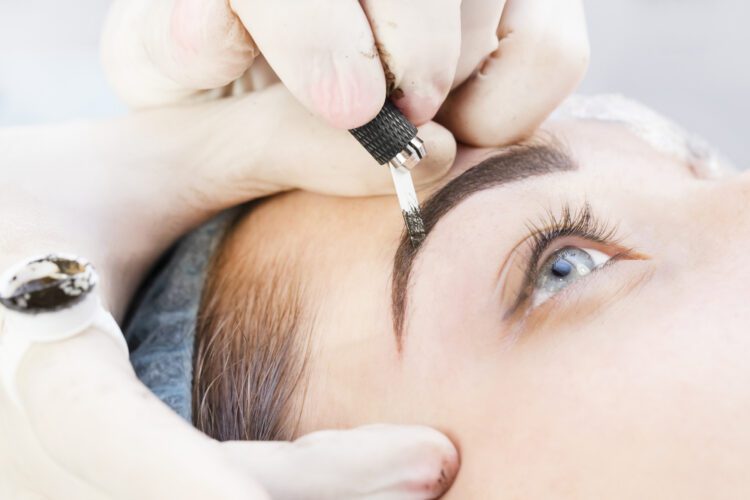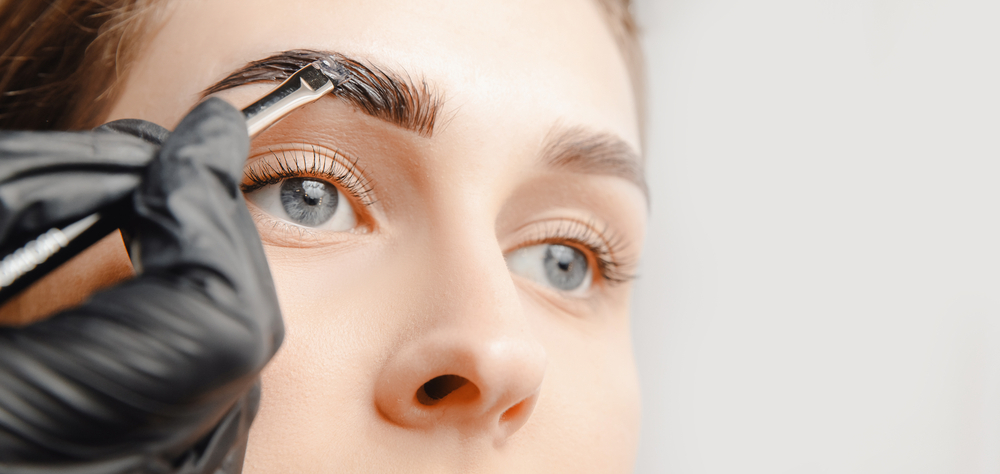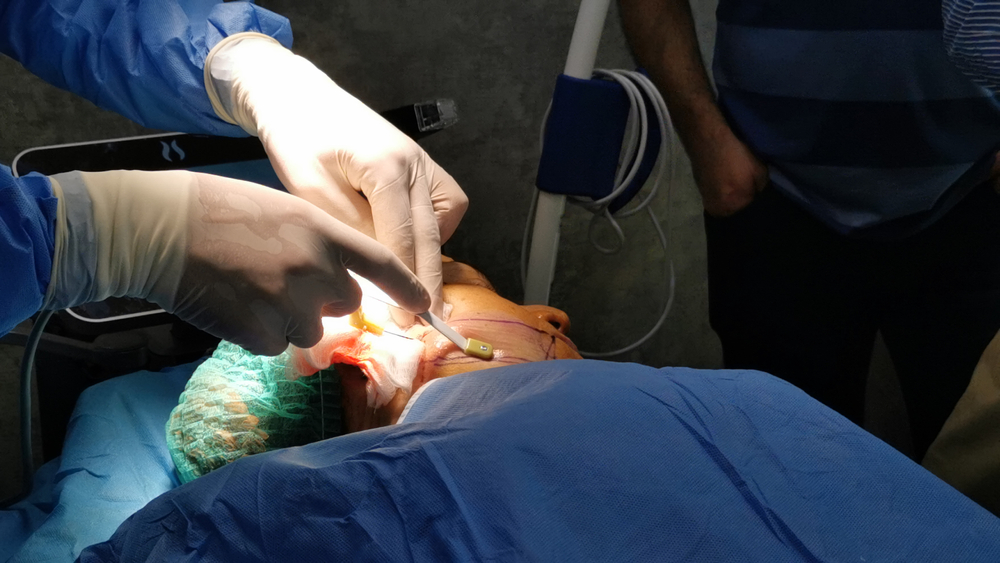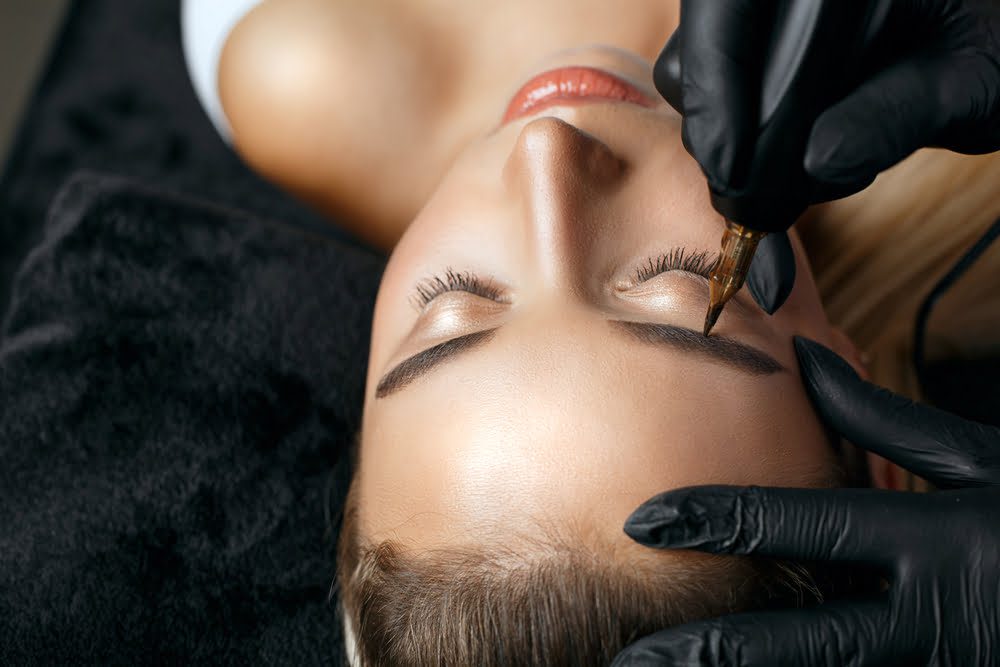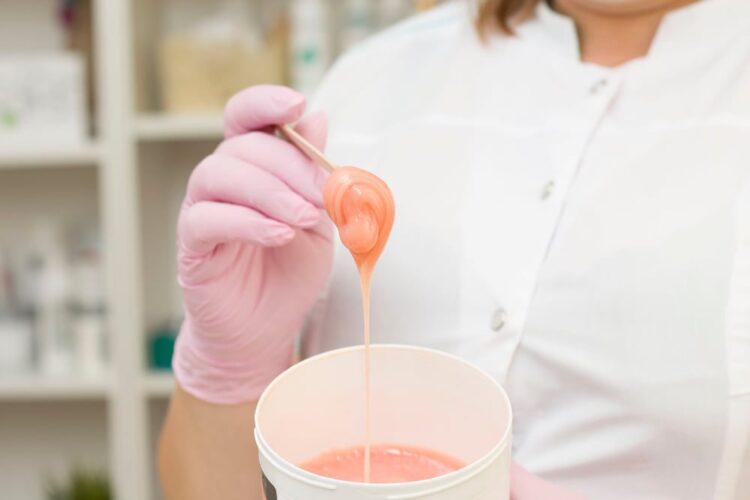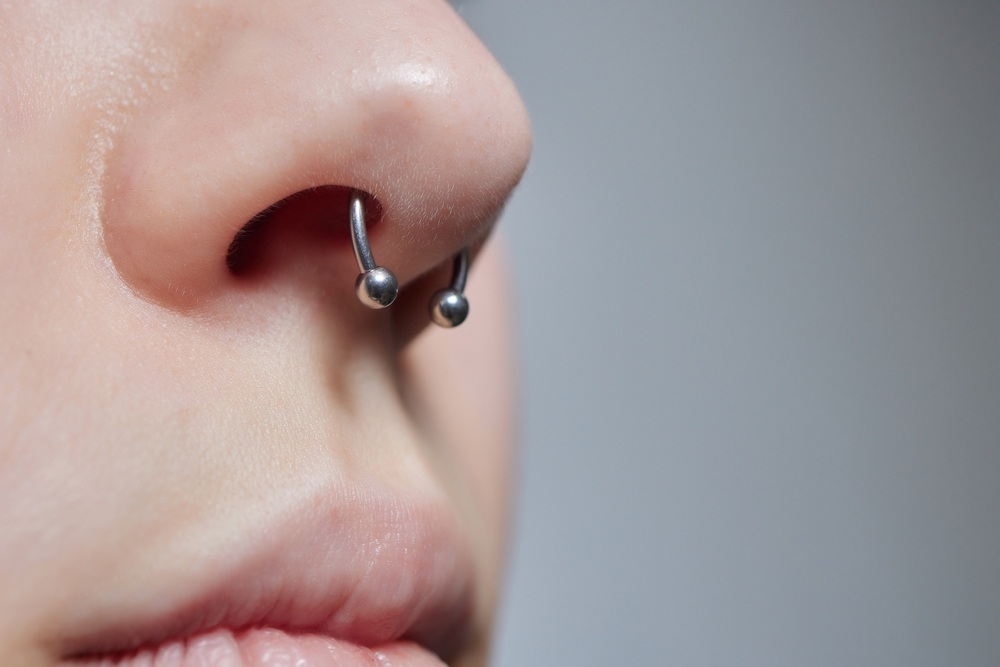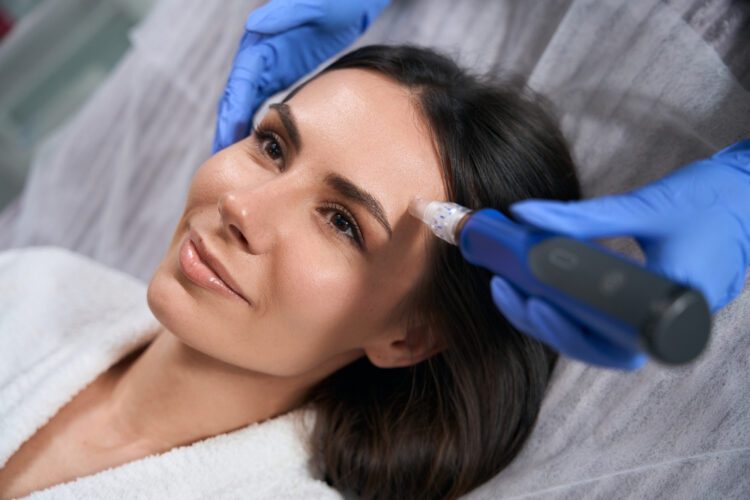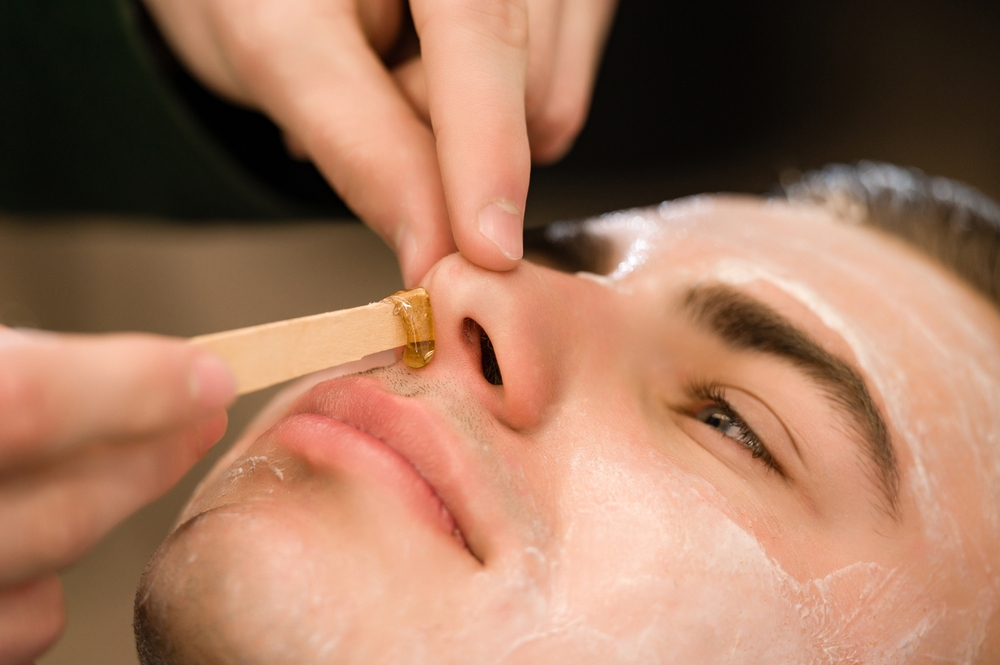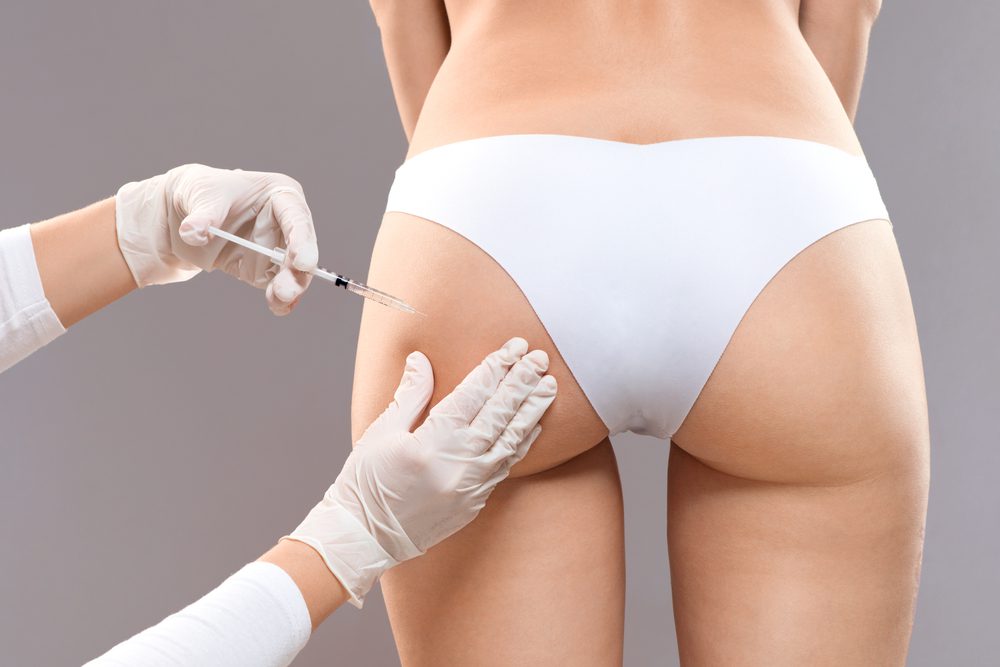Microblading has gained immense popularity in recent years as a semi-permanent solution to achieve perfectly shaped and filled eyebrows. However, for those considering this procedure, one of the most common concerns is whether microblading hurts. The idea of having tiny needles penetrate the skin near the eyebrows can be intimidating, and many individuals want to know what to expect in terms of pain and discomfort during the process.
In this article, we will delve into the topic of microblading pain, exploring the factors that can influence the level of discomfort, as well as tips and techniques to minimize any potential discomfort. Whether you are curious about trying microblading yourself or simply interested in learning more about the procedure, this article aims to provide you with a comprehensive understanding of the pain associated with microblading.
What is the process for a microblading session?
The process for a microblading session involves several steps to ensure a successful and satisfying outcome. Here is an expanded explanation of each stage:
1. Consultation.
The session begins with a thorough consultation between the client and the microblading artist. During this discussion, the artist will assess the client’s desired brow shape, thickness, and color. They will also evaluate the client’s skin type, facial features, and lifestyle to determine the most suitable brow design.
2. Preparing the client.
Before starting the procedure, the artist will clean the client’s eyebrow area and apply a topical numbing cream to minimize discomfort. This cream needs some time to take effect, allowing the artist to explain the process and address any concerns or questions the client may have.
3. Brow design and shaping.
Using their expertise and taking into account the client’s preferences, the artist will meticulously measure and mark the desired brow shape. They typically consider the client’s facial symmetry, natural brow line, and overall aesthetics to create a customized design that complements the client’s features.
4. Microblading technique.
With the brow design finalized, the microblading process begins. The artist uses a handheld microblading tool, which consists of a group of tiny, sterile needles attached to a handle. These needles are dipped into a high-quality pigment chosen to match the client’s natural hair color or desired shade.
5. Creating hair-like strokes.
The artist then delicately etches fine, hair-like strokes into the superficial layers of the skin. They follow the marked brow design, mimicking the natural direction and growth pattern of eyebrow hairs. This technique enables the artist to create realistic and natural-looking eyebrows.
6. Pigment application.
Throughout the procedure, the artist applies the chosen pigment to the skin, allowing it to seep into the tiny incisions made by the microblading tool. This ensures that the color remains in the skin and creates a long-lasting effect. The artist may occasionally wipe away excess pigment to ensure precise and clean strokes.
7. Numbing breaks.
Depending on the client’s comfort level, the artist may provide short breaks during the procedure to reapply numbing cream if needed. This helps alleviate any potential discomfort experienced by the client.
8. Final touches and aftercare.
Once the microblading process is complete, the artist will examine the brows and make any necessary touch-ups or adjustments. They will provide the client with detailed aftercare instructions, which typically include avoiding excessive moisture, sun exposure, and certain beauty products for a few weeks. This post-treatment care is crucial to ensure proper healing and retention of the pigment.
9. Follow-up appointment.
The microblading session is usually followed by a mandatory touch-up appointment scheduled 4-6 weeks later. During this session, the artist can assess how the client’s skin has healed, make any necessary adjustments, and ensure that the pigment has settled evenly.
| 💡 Tips Verywel Fit.com By following these steps, a microblading session can help clients achieve their desired eyebrow shape, fullness, and color, allowing for a more defined and effortless look. |
Is microblading painful? If so, how much?
Microblading is a semi-permanent cosmetic procedure that involves depositing pigment into the skin to create natural-looking eyebrows. While pain tolerance can vary from person to person, microblading generally causes minimal discomfort. Most individuals describe the sensation as mild to moderate, similar to a scratching or scraping feeling.
The level of pain experienced is often compared to that of eyebrow threading or tweezing. However, to ensure a comfortable experience, a topical numbing cream is typically applied prior to the procedure. Overall, while there may be some discomfort during the microblading process, it is generally considered bearable and well worth the results achieved.
factors that can influence the level of discomfort during Microblading.
Factors that can influence the level of discomfort experienced during a microblading procedure are numerous and can vary from person to person. While some individuals may describe the process as relatively painless, others may find it more uncomfortable. Here are some factors that can influence the level of discomfort during microblading:
1. Pain tolerance: Each person has a different threshold for pain. Some individuals may have a higher pain tolerance and, therefore, experience less discomfort during the procedure, while others may be more sensitive to pain and find it more uncomfortable.
2. Anxiety and stress levels: The level of anxiety or stress a person experiences before and during the microblading procedure can impact the perception of discomfort. Higher levels of anxiety or stress may make the individual more sensitive to any discomfort and result in a more uncomfortable experience.
3. Skin sensitivity: The sensitivity of an individual’s skin can also influence the level of discomfort. Those with more sensitive skin may experience a greater degree of discomfort during the procedure.
4. Skill and technique of the microblading artist: The expertise and technique of the microblading artist can greatly affect the level of discomfort. An experienced and skilled artist will be able to perform the procedure with minimal discomfort, while an inexperienced or less skilled artist may cause more discomfort due to improper techniques.
5. Topical anesthetics: The use of topical anesthetics can help minimize discomfort during microblading. The type and effectiveness of the anesthetic used can vary, and some individuals may require a stronger or longer-lasting one to achieve a more comfortable experience.
6. Aftercare routine: Following the recommended aftercare routine provided by the microblading artist is crucial in minimizing discomfort during the healing process. Neglecting proper aftercare can lead to increased discomfort, as the skin may become irritated or infected.
7. Personal pain management techniques: Some individuals may utilize personal pain management techniques, such as deep breathing exercises or listening to calming music, to help reduce discomfort during the microblading procedure.
| 💡 Tips Verywel Fit.com It’s important to note that while microblading may cause some discomfort, many individuals report that the results outweigh any temporary discomfort experienced. |
techniques to minimize any potential discomfort during microblading.
1. Numbing Cream: Prior to the microblading session, a topical numbing cream can be applied to the treatment area. This cream contains ingredients like lidocaine, which helps in numbing the skin and reducing any sensations of pain or discomfort.
2. Ice Pack: Some individuals find relief by applying an ice pack to the treatment area before the procedure. This helps in numbing the skin and reducing sensitivity, making the microblading process more comfortable.
3. Distracting Techniques: Many microblading technicians use various distracting techniques to divert the client’s attention during the procedure. This may include engaging in light conversation, playing soft music, or providing a stress ball to squeeze. These techniques help in redirecting the focus away from any discomfort.
4. Breathing Exercises: Deep breathing exercises are a common technique used to manage discomfort during microblading. By taking slow, deep breaths, individuals can promote relaxation and reduce any sensations of pain or anxiety.
5. Communication: Openly communicating with the microblading technician is crucial. Sharing any concerns or discomfort experienced during the procedure allows the technician to make adjustments as needed. They can adapt their technique, apply more numbing cream, or take breaks, ensuring a more comfortable experience.
6. Choosing an Experienced Technician: Opting for a skilled and experienced microblading technician is essential. Professionals who have honed their technique over time are often able to perform the procedure with minimal discomfort. They will also have a better understanding of pain management strategies and be able to provide the most comfortable experience possible.
7. Post-Treatment Care: Following the microblading procedure, the technician will provide detailed aftercare instructions. Following these instructions diligently, such as avoiding excessive sun exposure, touching the treated area, or applying irritants, will help minimize any potential discomfort or complications during the healing process.
| 💡 Tips Verywel Fit.com By implementing these techniques, individuals can significantly reduce the potential discomfort associated with microblading. Remember, each person’s pain threshold is unique, so it is vital to communicate openly with the technician and take advantage of these pain management strategies to ensure the most comfortable experience possible. |
Microblading Aftercare: Essential Steps for Optimal Healing and Long-Lasting Results.
1. Keep the area clean: For the first 24 hours, it is important to keep the microbladed area clean and dry. Gently cleanse the eyebrows using a mild, non-alcoholic cleanser or a provided aftercare solution. Avoid using any harsh or abrasive products that may irritate or damage the delicate skin.
2. Avoid water contact: During the initial healing phase, it is crucial to avoid any water contact, including excessive sweating, swimming, saunas, or hot tubs. Water may cause the pigment to fade or be washed away, hindering the desired outcome. It is recommended to avoid these activities for at least two weeks.
3. Apply aftercare ointment: Following the cleansing process, a thin layer of aftercare ointment should be applied to the microbladed area using a clean cotton swab or a provided applicator. This helps to keep the area moisturized and aids in the healing process. Apply the ointment as directed by the microblading artist, usually 2-3 times a day, for at least a week.
4. Avoid picking, scratching, or peeling: It is natural for the microbladed area to scab and flake during the healing process. However, it is crucial to refrain from picking, scratching, or peeling the scabs, as this may lead to pigment loss or scarring. Allow the scabs to fall off naturally to ensure optimal pigment retention.
5. Protect from sun exposure: Sun exposure can cause the pigment to fade and may lead to uneven healing. It is essential to protect the microbladed area from direct sunlight by wearing a wide-brimmed hat or using sunscreen with a high SPF. Avoid tanning beds or excessive UV exposure for at least four weeks post-treatment.
6. Avoid makeup and certain skincare products: During the initial healing phase, it is recommended to avoid applying makeup or using skincare products directly on the microbladed area. These products may contain ingredients that can interfere with the healing process or cause irritation. It is best to consult with the microblading artist for specific recommendations on when it is safe to resume using these products.
7. Follow the provided aftercare instructions: Each microblading artist may have their own specific aftercare instructions tailored to their technique and products used. It is crucial to carefully follow these instructions to ensure optimal healing and long-lasting results. Failure to adhere to the aftercare instructions may result in subpar outcomes or increased risk of complications.
| 💡 Tips Verywel Fit.com By diligently following these essential aftercare steps, individuals can maximize the healing process and achieve beautiful, long-lasting microbladed eyebrows. Remember, proper aftercare is key to achieving the desired results and maintaining the appearance of flawlessly shaped and defined brows. |
Frequently Asked Questions.
Yes, microblading can be painful without the use of numbing cream.
The pain level of microblading versus a tattoo can vary from person to person but generally, microblading is considered to be less painful than getting a tattoo.
Microblading typically causes more discomfort compared to threading as it involves using a small handheld tool to create small incisions in the skin. However, pain tolerance varies among individuals, and both procedures can cause some level of discomfort.
Yes, microblading can fade over time.
Microblading may hurt more the second time due to increased sensitivity in the treated area and potential scar tissue from the previous procedure.
After microblading, you can take over-the-counter pain relievers such as acetaminophen or ibuprofen to alleviate any discomfort or pain. However, it is always best to consult with your microblading artist or a medical professional for personalized advice.
No, microblading does not cause cancer.
Bottom Line.
Microblading is generally considered to be a minimally painful procedure. While some individuals may experience mild discomfort during the process, the use of numbing creams and the skill of the technician can greatly minimize any potential pain.
It is important to remember that pain tolerance varies from person to person, so what may be uncomfortable for one individual may be completely tolerable for another. Ultimately, if you are considering microblading, it is advisable to consult with a reputable technician who can address any concerns or questions you may have regarding the potential discomfort involved.

 Workout
Workout
 Meditation
Meditation





 Contact Us
Contact Us
